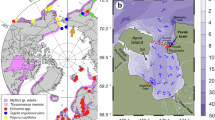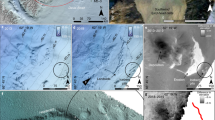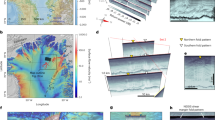Abstract
IN NATURE of November 20 (p. 66) you give an account of the finding of some relics of the Jeannette, which have been picked up on an ice-floe at Julianhaab, in lat. 61° N., long. 46° W., near the south point of Greenland, and which must have drifted from the New Siberian Islands in lat. 75° N., long. 155° E., where the Jeannette was squashed three years ago. This I consider a most important find with regard to Arctic navigation and discovery. The question arises, How did the ice-floe get to Julianhaab? I propose the following solution. The Siberian Islands bear nearly due north from Julianhaab, and in a straight line up Davis's Strait, Baffin's Bay, Smith's Sound, Lincoln Sea. &c., and across at a distance of about 250 knots from the Pole. I think it most probable that the floe may have drifted through “the unknown,” or what Osborn calls “the land of the white bear,” the large unexplored area to the west of Banks's Land, and have got into Baffin's Bay through one of the sounds on its west coast—either by Jones's Sound, where the tide runs eastward at the rate of two knots an hour (“Inglefield,” p. 77), or by Banks's Strait and Lancaster Sound.
This is a preview of subscription content, access via your institution
Access options
Subscribe to this journal
Receive 51 print issues and online access
$199.00 per year
only $3.90 per issue
Buy this article
- Purchase on SpringerLink
- Instant access to full article PDF
Prices may be subject to local taxes which are calculated during checkout
Similar content being viewed by others
Author information
Authors and Affiliations
Rights and permissions
About this article
Cite this article
NEWALL, R. The “Jeannette” Drift. Nature 31, 102 (1884). https://doi.org/10.1038/031102a0
Issue date:
DOI: https://doi.org/10.1038/031102a0



